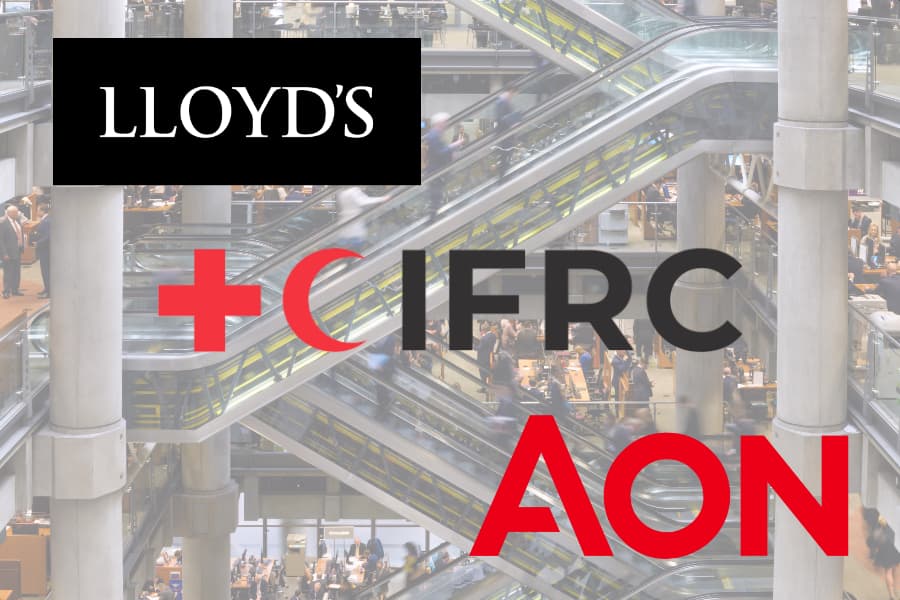Aon & Lloyd’s Disaster Risk Facility develop reinsurance for IFRC Fund

Broking group Aon and the Lloyd’s Disaster Risk Facility have developed a reinsurance product to support an International Federation of Red Cross and Red Crescent Societies (IFRC) and Centre for Disaster Protection designed approach to disaster response.
It’s pitched as an innovative insurance mechanism that uses private reinsurance markets to help make donor contributions to the IFRC’s Disaster Response Emergency Fund (DREF) go even further.
The reinsurance capacity was provided by the three founding members of the Lloyd’s Disaster Risk Facility, as led by Hiscox alongside Chaucer and RenaissanceRe, while Fidelis MGU also participated in the placement as the sole direct representative of the Bermuda market.
The DREF has been used since 1979 to rapidly and efficiently release funding to local Red Cross and Red Crescent Societies before and after disasters strike.
With the frequency and intensity of disasters increasing, in large part due to climate change, the IFRC sees more in need of support and also the importance of having the financial protection in place to support the DREF.
A new risk transfer mechanism backed by members of the Lloyd’s Disaster Risk Facility will ensure swift and agile support is available when a disaster occurs.
This new reinsurance backstop is seen as a “critical safety valve for DREF’s life-saving work, ensuring the DREF can continue to meet the needs of today while standing ready for the crises of tomorrow.”
Andrew Mitchell, Minister of State for Development and Africa, UK Foreign, Commonwealth and Development Office explained, “Climate change is devastating the lives of millions around the world. With natural disasters on the rise, this innovative new insurance will provide extra funding for life-saving emergency assistance. This is UK expertise at its best – funding from the UK, insurance purchased through the City of London and technical support from the Centre for Disaster Protection.”
This reinsurance tool provides DREF with contingency funding of up to 20 million Swiss Francs (US$23 million, €21 million, £18 million), meaning that once DREF’s allocated funding for natural hazards hits 33 million Swiss Francs (US$38 million, €34 million, £29 million), the reinsurance is triggered to replenish DREF’s reserves.
Through the transfer of risk from strained public balance sheets to the private sector, DREF will now be able to respond more flexibly and effectively, with the potential to reach an additional 6 million vulnerable people each year, the IFRC believes.
The reinsurance provides an important safety net for DREF, making extra funds available so it can provide aid to vulnerable communities, even during periods of increased demand.
Jagan Chapagain, IFRC Secretary General, said, “Strategic partnerships with the private sector are essential to address rising humanitarian needs and the humanitarian funding gap. We have a responsibility to respond rapidly and at scale, in the most effective and sustainable manner, and to ensure that our actions are locally led and community-centred. Our partnership with Aon and the Centre, and through the bespoke insurance solution for DREF, allows exactly that.”
Eric Andersen, President of Aon, added, “The impact of climate is giving rise to an increasing number of natural disasters that are disproportionally affecting underserved communities. At Aon, we are honored to play a role to help protect DREF from volatility and increase its capacity to effectively distribute funds to those in need through our innovative capabilities in matching capital to the risk and the innovation in our industry to address the humanitarian impact from climate-related disasters.”
The reinsurance is both replicable and scalable and modeled on the actual historic performance of the DREF.
It represents the first time an indemnity-based reinsurance model has been developed specifically within a Humanitarian Disaster Risk Finance context and has been specifically developed to use established commercial catastrophe re/insurance markets, reducing cost and improving scalability.
Daniel Clarke, Director, the Centre for Disaster Protection, said, “Having the right plans in place before a crisis is crucial for effective management of its impacts. We are proud to have supported IFRC and Aon teams to develop a risk transfer policy that strengthens DREF’s ability to provide emergency funds that will help meet the needs of people affected by crises globally.”
Annette Detken, Head of the InsuResilience Solutions Fund, also commented, “IFRC’s intention to enhance and complement DREF’s capacities when hit by climate-related hazards is a unique opportunity to bring development work closer to the humanitarian work and pilot climate risk insurance as a means for enhancing humanitarian aid activities. The ISF is proud to co-fund this innovative programme, adding capacity to improve the resilience of vulnerable people in many parts of the globe.”
John Neal, Lloyd’s CEO, further explained, “Insurance has a vital role to play in building society’s resilience against climate-related risks: acting as a backstop when the worst happens and a buttress for preparedness in the meantime. This innovative response tool builds on the work of our Disaster Risk Facility and shows what our market can do when we collaborate with our partners in government to close global insurance gaps and mitigate the human and financial impacts of natural catastrophes.”





